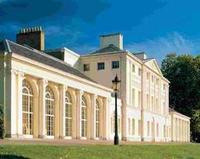Slavery and Justice at Kenwood House
 From 24 May, English Heritage is hosting a brand new exhibition, Slavery and Justice: the legacies of Lord Mansfield and Dido Belle at Kenwood House, Hampstead.
From 24 May, English Heritage is hosting a brand new exhibition, Slavery and Justice: the legacies of Lord Mansfield and Dido Belle at Kenwood House, Hampstead. The display, which marks the bicentenary of the abolition of the British transatlantic slave trade, explores the fascinating connections between Kenwood House and the story of abolition, through the lives of 18th-century England’s most powerful judge and his great-niece Dido Elizabeth Belle.
As Lord Chief Justice, the 1st Earl of Mansfield presided over important legal decisions about slavery in England while living at Kenwood House. Three of these cases were brought by the renowned abolitionist Granville Sharp. Meanwhile, he and his wife, who were without children of their own, were bringing up Dido, the daughter of his nephew Sir John Lindsay and an enslaved African woman. Until the exhibition closes on 2nd September 2007, visitors have a rare opportunity in London to see the double portrait of Dido and her cousin Lady Elizabeth Murray, attributed to Zoffany and on loan from Scone Palace in Perth
Using objects from the Kenwood collection and loans from private owners and museums, this intimate display will explore, through scant but important documents, Dido’s unusual place within Mansfield’s aristocratic family, and glimpse her life at Kenwood as she supervised Kenwood’s dairy and helped Lord Mansfield with his legal correspondence. The exhibition also explores how far cases in Mansfield’s court influenced 18th and 19th century attitudes towards abolition. The individual stories of these cases give an enlightening and sobering insight to the perilous lives of black people in London in the 18th century.
Cathy Power, Senior Curator for English Heritage, commented: “This new display is very important for Kenwood House, as it explains the vital role played by Mansfield’s early rulings in the slave trade cases and the early abolition story. But, the display also shows us 18th century attitudes and beliefs which are no longer familiar or acceptable. The story of Dido Belle being brought up in this family gives us an interesting and personal connection to this often hard to understand period of history. I am certain visitors will find Dido’s story as intriguing as we do.”
Whilst Dido was perhaps treated as a loved but poor relation, she enjoyed a life far removed from that of many other black people in England at the time. The double portrait, temporarily on loan to Kenwood House from the collection of the Earl of Mansfield in Scotland, portrays Dido included in family life and dressed in fine aristocratic clothes next to her legitimate cousin Elizabeth. This is a rare exception to the subordinate artistic portrayal of black people in the 18th century and a clue to her unusual status in society.
English Heritage is offering hour-long themed tours led by knowledgeable guides, who will explain the complex story of Lord Mansfield, and his connections to the abolition of the transatlantic slave trade. Tours run daily at 2pm and are free.
Slavery and Justice: the legacies of Lord Mansfield and Dido Belle will be open from 11am-5pm daily. Admission is free.
For more information about Mansfield and the exhibition at Kenwood visit English-heritage.org.uk.

